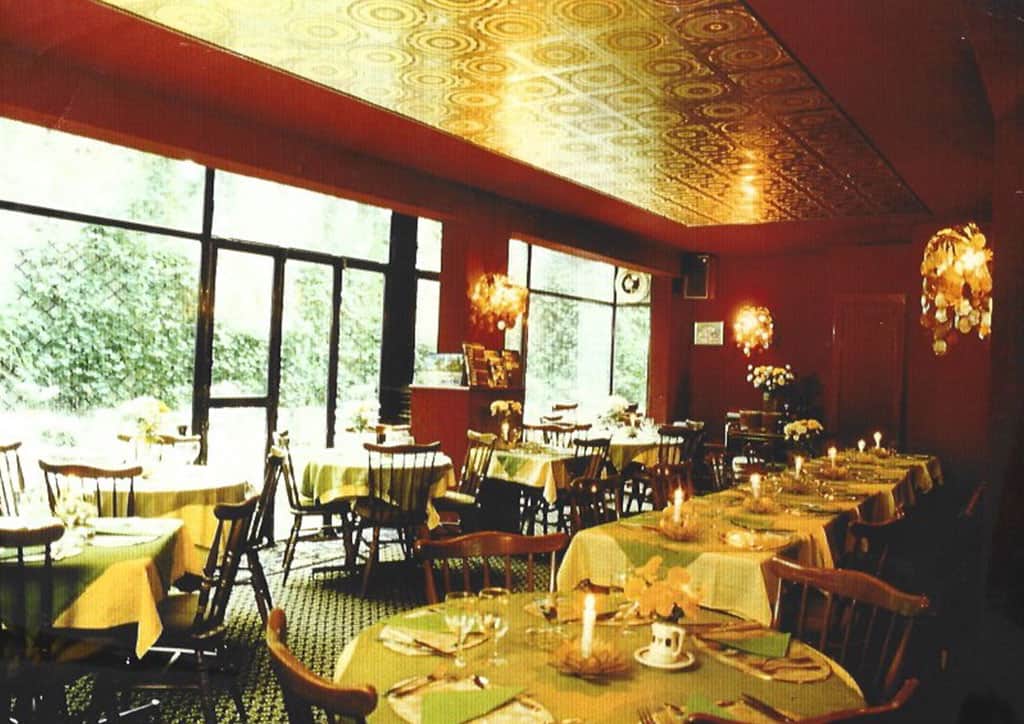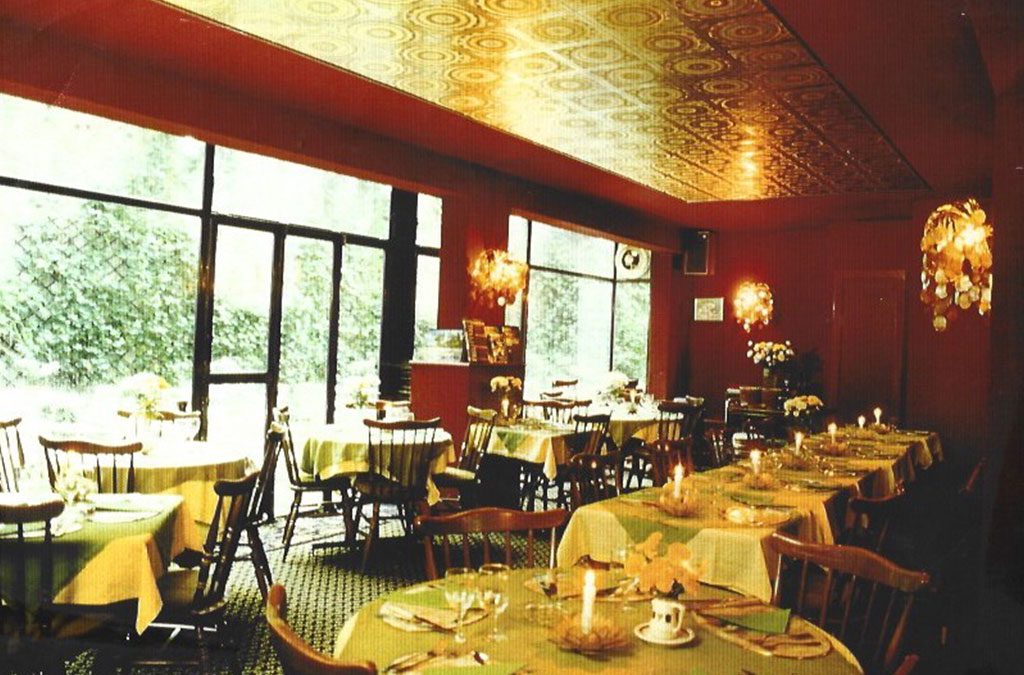
There was a point, a few years ago, when a Filipino restaurant overseas was a cause for celebration. At a time when Filipino cuisine was generating global buzz, it was, perhaps, the most measurable form of validation. But in the 1970s, when social media was non-existent and traveling to Europe was reserved for the country’s upper-upper, a humble Filipino restaurant stood tall in a city that prides itself on its culinary rigor.
For Filipino culinary personality and local legend Nora Daza, opening Aux Iles Philippines at the heart of France was a logical step in her career.
“I think she realized that being a restaurateur was going to be the new track in her career,” says Nina Daza Puyat, Nora’s daughter. “In her TV shows and cookbooks, she enjoyed teaching people how to cook, but now as a restaurateur, she could experience the joy of seeing them enjoy her food.”
During visits to France, Nora observed that Asian restaurants were doing well. Already seasoned from the success of her Manila-based French restaurant Au Bon Vivant, she believed that she could do better in terms of food, service, and ambiance.
Making a good impression
Nora was more than a cooking show host. She was and continues to be an image, with perfectly coiffed hair and an impeccably made-up face—it’s a look that’s almost as iconic as her cookbook. You could say that Aux Iles Philippines was her as a restaurant: capiz and brass light fixtures, capiz placemats, and capiz candle holders against luxurious burgundy walls that were lined with oil paintings of Philippine scenery. Tables were covered in green and yellow tablecloths and it had a strict no-paper-napkin policy. It was a picture of elegance and class. Both of them were.
She decided early on that she wanted the restaurant to make a good first impression, recalls Puyat, adding that her mom insisted on projecting an image of the Philippines that was modern and progressive and that Filipinos were educated, sophisticated, and cultured in the ways of the world.
“She wanted to show that although we were a small, obscure, relatively unknown nation compared to France, the Philippines was culturally rich in the arts, music, dance, and food,” Puyat adds.
It was characteristic of Nora to wear this pride. An accomplished woman of the world who could speak Spanish, English, and French in addition to Filipino, she refused to be looked down on by foreigners. “This is just a theory,” begins Puyat, “but my mom would always refer to our Spanish colonization or Spanish influences in our food because she probably thought that it was one way to elevate Philippine culture in the eyes of the French.”
Later in life, Nora became so frustrated with the Filipino stereotype that she took out an ad in the International Herald Tribune because she was so tired of seeing postings looking for Filipino domestic helpers. Her ad said: “Seek French/American Male or Female Domestics.”
A family affair
In her journal entries, which Puyat shares with CITEM, she wrote about Aux Iles Philippines’ first location at 9 Rue Cochin. The award-winning restaurant Le Bernardin was nearby but her place, however, was a simple outlet owned by her eventual friend, restaurateur Jacques Maniere.
“It was a good location, but the facilities were not first-class,” described Ms. Nora. In another entry, she delved into further detail:
“We rented the place for 2,500 francs a month. I found out that Jacques Maniere rented it for 1,000. So he made 1,500 [off] me. But I did not mind for he had a stove in the kitchen. What he did not have was a very good WC (water closet). We had a problem with that.”
But she made it work, turning it into a 60-seater space of sophistication, plus a scenic open-air garden in the summer. Making it more idyllic were her kids: Sandy, who eventually became a chef and TV personality, made rounds as a cook and waiter; Bong was a manager, bartender, waiter, cashier; Stella was a cashier; Mariles was an occasional waitress; and Nina was a waitress, bartender, cashier. Everyone also took turns as a dispatcher.
“Outside work hours, we had to shop for ingredients from different places, accept deliveries of wine and groceries, and accept reservations,” remembers Nina. The fact that they lived just above the restaurant made their tasks more convenient.
Nora herself used to stand at the door, coaxing people to come in. In a matter of months, however, Robert Courtine of Le Monde wrote a half-page article on the restaurant, which would eventually become Aux Iles Philippines’ launching pad in the city. After that write-up, the restaurant thrived.
In a few short years, the restaurant was rated with two spoons and forks by the Michelin Guide, among other accolades.
Hitting the French notes
Aux Iles Philippines had fresh lumpia (fresh spring rolls), lamb caldereta (tomato-based lamb stew, which had crème fraîche and served with baguettes), adobo (using chicken and pork), gambas of Pampanga with taba ng talangka (tiger prawns with crab fat, served over a scoop of rice), sinigang na sugpo (sour stew with prawns). Decades before international chefs and media touted ube (purple yam) as one of the breakthrough flavors of the decade, the French were enjoying it at Aux Iles Philippines.
“Oh the dish that made waves for the French was our Kuhol Bicol,” she wrote. “They had never tried escargot that way.
Little did the French know, Kuhol Bicol was made in the Philippines. According to her journal, a large stockpot would be filled with snails cooking in ginger, turmeric, coconut milk, bagoong, and peppers. After it cooled, it was canned and sent to Paris where she would put the delicacy into the same small ceramic platters used for French escargot. Talking about the bestselling dish, she wrote:
“The French escargot were sold in eight to 10 to 12 dozen cans. I would buy the ones at 10 dozens a can and put one French escargot on top of the Kuhol Bicol, add a dollop of cream, and bake it in the oven. There were six ceramic containers per order and we would serve it that way. The French had never had escargot that way. Theirs were with butter, garlic, salt, and parsley. What a difference our escargot was for them.”
She also sold lambanog (traditional palm liquor), which she embellished with sweetened nangka (jackfruit) and served as an after-dinner drink. “I know I charged 10 francs for that drink. A whole five-gallon container would cost me 30 pesos! Those were the inventions I made for Aux Iles Philippines!” she wrote.
The legacy of Nora Daza
Eight years after her death and sixty decades after her cookbook, Nora Daza has continued to become synonymous with Philippine cuisine. It is perhaps the effect of her goal to make local fare a global phenomenon.
“To be honest, my mom was not a clever strategist or a planner, nor was she organized or methodical in her ways, but once she set her mind on a goal, she was unstoppable,” says Puyat, adding that her mom’s ambitious plan to introduce Filipino food to the culinary capital of the world was fueled by her conviction that it could stand alongside other cuisines.
While Puyat doesn’t believe that Ms. Nora’s efforts didn’t directly impact Filipino cuisine during her time, her mother succeeded in numerous ways. She created an oasis for Filipinos in Europe who were craving lechon kawali (fried pork belly), sinigang, pancit (noodles), and the Filipino language. She drew attention and awareness to the Philippines, and she made Filipinos proud of their heritage.
“While her main purpose was to introduce the French to the flavors of our cuisine, she also managed to convince fellow Filipinos that our food was special and unique,” says Puyat. “Remember, this was a time when Filipino food was considered ‘pang bahay’ and ordinary, nothing special. It was not yet in the collective mindset of Filipinos then to be proud of their food and culture. But Nora Daza, even in the early ’70s, believed it in her mind and heart.”
Filipino restaurants abroad have become a dime a dozen these days, but the incomparable Nora Daza did before it became fashionable. And she did it with style.
Photo of Nora Daza and Aux Iles Philippines.


Recent Comments